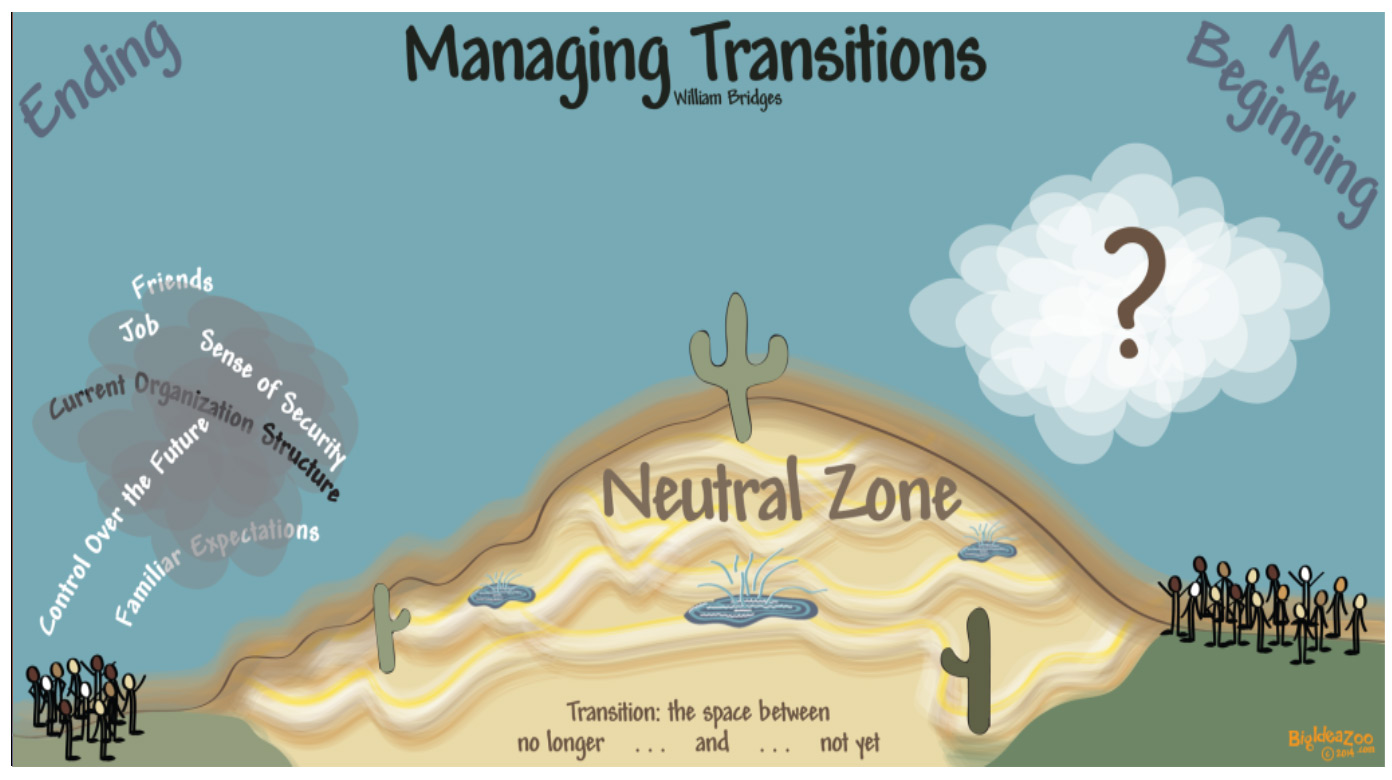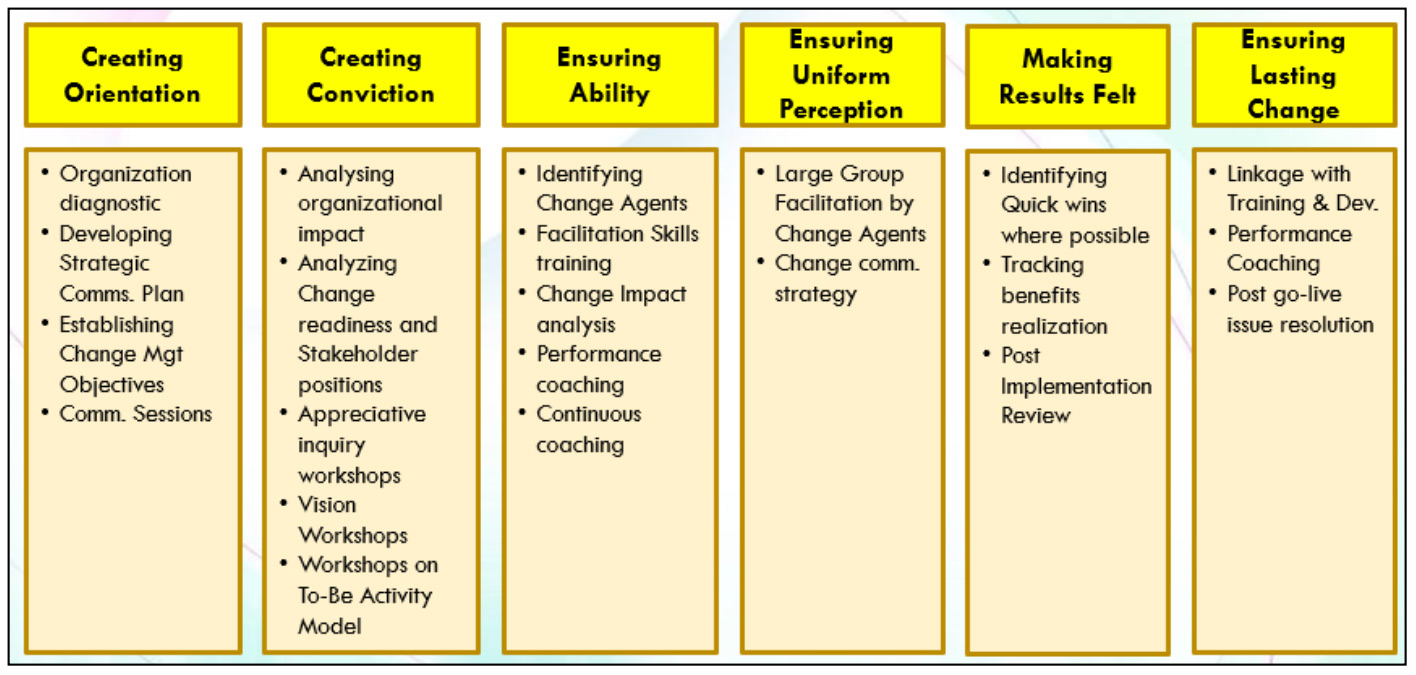At CPBN we make a clear distinction between “Change” and “Transition.”
“Change” is a Point of Arrival: a new institutional arrangement, a new organisation structure with changes in reporting relationships, redesigned process and redesigned roles, the move to a new site, the implementation of ICT enablers to support business processes execution.
On the other hand, Transition is psychological. It is a three-phase process (see Error! Reference source not found. above), that people go through as they internalize and come to terms with the details of the new situation that the change will bring about. All three phases of a transition have risks for the organisation but particularly risky is phase 2, “The Neutral Zone” or the “Wilderness”, this in-between place where things have not quite ended and have not quite begun. This is the place where defections can occur and where team members can lose faith that any of the promised improvements will become a reality.
We believe that getting people through the transition is essential if any “Change” is to work as planned.
The 3 Stages of Transition

Throughout the transformation journey with your organisation the CPBN team will have been focusing on the Change Management Success Factors shown below. At the outset there was a focus on Orientation (clarifying over-arching goals and strategies) and in the assessment place our demonstration that there as a “melting iceberg,” was aimed at building the case for change and creating conviction throughout the organisation that change was needed.
During the transition phase, CPBN will support your organisation with the remaining change success factors (see below), namely:
- Ensuring ability
- Ensuring uniform perception
- Harvesting the promised gains and making results felt, and
- Ensuring that there is a foundation for lasting change.

